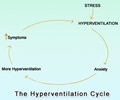Treatment & Rehabilitation
Treatment of stroke patients should focus on restoring the pre-stroke functional abilities of the patient.
Medical Treatment
Medical intervention in some form is usually urgent in a patient with a major stroke. The American Stroke Associations says that “Time lost is brain lost!” and this is very true. For ischemic stroke due to a clot, immediate action to dissolve the clot can help in resolving the stroke effects and prevent its full sequelae.
Tissue plasminogen activator (TPA) dissolves blood clots that causes the stroke. If this drug is administered within a soon after the stroke the effect is more pronounced and the patient may not develop bleeding-related complications.
Heparin is ananticoagulant that is used to treat stroke patients. This may help more to prevent subsequent strokes than to improve the present condition. Warfarin, a blood thinner is also commonly used. Aspirin, when administered after a stroke, helps in the overall recovery.
Medications are administered according to the needs of the patient.
It is absolutely vital to keep conditions such as diabetes and hypertension in control in order to prevent future strokes.
Surgical option - Carotid endarterectomy: If a person suffers a stroke or a Transient Ischemic Attack (TIA) due to a constriction or ulceration of the carotid arteries they may require a surgery, called thecarotid endarterectomy that restores normal blood flow through these arteries. If left untreated, these patients stand a good chance of suffering subsequent strokes in the future.
Angioplasty and stenting of Carotid Artery is a relatively new procedure that shows good potential in the treatment of carotid artery disease especially in patients who are not fit to undertake a surgery. This includes patients who have had an endarterectomy. In this procedure, a long hollow tube (catheter) is inserted in the artery in the groin and is threaded through to the constricted carotid artery. The inflated end of the small balloon located at the tip of the catheter is used to open the constricted area. A metal stent is placed in the artery to prevent it from further narrowing.



















